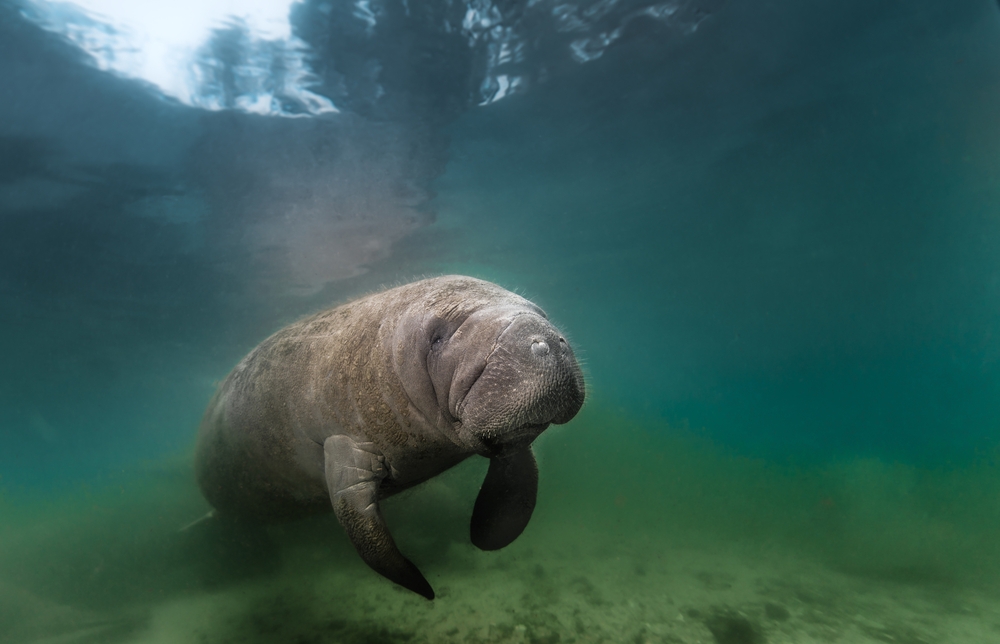
Manatee - Legends and protection
The manatee, or manati, its indigenous name, is a curious animal of the order of the sirenians.
Its name was given by old navigators who associated their song with that of mythological mermaids. It is a mammal aquatic animal, has large and rounded body, which earned him the nickname of cow-marine in some regions of the country.
There are 3 types of manatee classification; the Amazon manatee, the manatee and the African manatee. The species that we find on the Brazilian coast is the manatee, which in adult life can reach up to 4 meters and weigh approximately 800 kg.
The marine manatee inhabit the Americas in general, from Mexico to the US, through Central America, Venezuela, Colombia, Guyana, Suriname, and Brazil.
Extinction threatens this species that is currently protected by severe environmental laws. In Brazil the manatee has been protected since 1967.
The manatee is a solitary animal, only seen in groups during mating seasons. Because of solitude and docile temperament, it becomes easy prey for predators. Their eating habits are noticeable because the manati gets to spend 8 hours a day eating. Their food consists of algae and water lilies, aquatic grass, and mangrove. An adult animal consumes 10% of its weight in plants and stores up to 50 liters of fat as an energy source during the dry season.
The manatee contributes to marine biodiversity because by feeding on them, it prevents algae from accumulating in one place, or massively rising to the surface making life difficult for other species, in addition to their feces serving as fertilizer.
Of docile temperament, robust body, massive and rough, the manatee has broad tail and flattened. Although not having a neck, you can move your head in all directions. He is not a fast animal and spends half the day resting and sleeping underwater.
Its reproduction is low, normally the female only breeds 1 cub at a time and the gestation lasts 13 months. Each female has, on average, 1 cub every 4 years. Between mothers and offspring the communication is made through a characteristic moan, which even gave rise to legends in the region of Guaraíras Lagoon.
The natural predators of the manatee are crocodiles, sharks, killer whales and of course, humans.
Its indiscriminate hunting by the popular belief that it owns 7 different meats to obtain oils, leather and even meat, caused that the species was almost exterminated. Today, fishing for manatees of any kind is prohibited.
In our region is famous the legend that in the time of the colonization an Indian of anthropophagous habits, in a moment of madness devoured a child near the Lagoon of Guaraíras. The child's family charged the authorities with provisions and the Indian was punished. As punishment, the Indian would stay in the water until he was called and stayed there for a long time. When the other Indians of the village came to call him, they did not find him. What was found in the lagoon was an unseen fish, the manatee. The next night there was a groan that shook all the water. On moonlit nights one could see the reflection of the manatee wandering through the waters, a great mystery.
Legends aside, it is possible to see the appearances of the marine manatee near the Catu River and in Sagi, where there is an area of preservation of the species.







 ESPAÑOL
ESPAÑOL
 PORTUGUES
PORTUGUES